Strolling through the local market, the vibrant array of cherries always catches my eye, a reminder of the sheer diversity and richness this fruit offers.
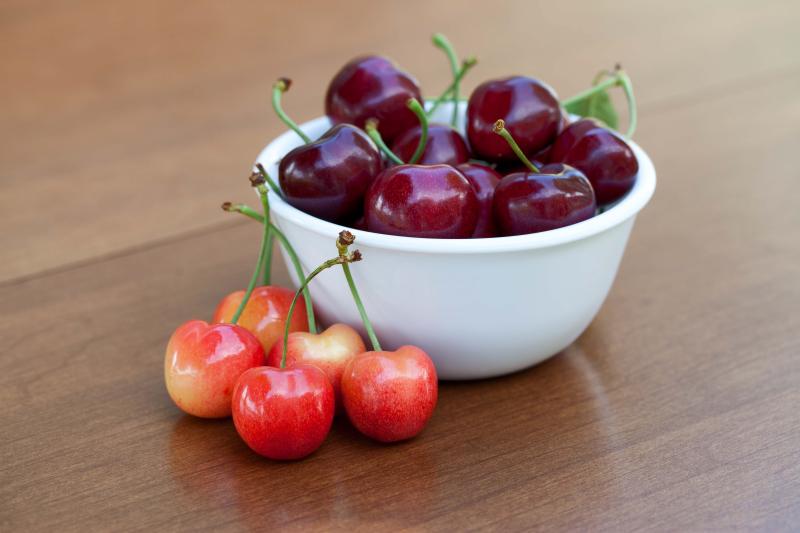
With over 1,000 varieties worldwide and around 200 available in the United States alone, choosing the right cherry can feel like a challenging exploration.
From my own experience, I’ve learned to look beyond just the color, considering the subtle differences in acidity that each variety brings to the table.
Highlights
- Craving better sleep? Snack on cherries, nature’s own source of melatonin, for a delicious boost to your sleep quality.
- If you’re dealing with GERD or acid reflux, be mindful that while sweet cherries are gentler with lower acidity, they can still sometimes trigger symptoms.
- Did you know? Once picked, cherries lock in their flavor and acidity, so what you taste at the store is what you get at home — no waiting for ripeness or sweetness to kick in!
In this article:
- Are Cherries Acidic?
- Do Cherries Become Sweeter?
- Ripeness at Harvest
- 5 Well-known and Widely Available Sweet Cherry Varieties with Lower Acidity
- 5 Sour Cherry Varieties with Higher Acidity
- Health Benefits of Eating Cherries
- Potential Adverse Effects for Acid Reflux and GERD Patients
- Safe Cherry Consumption for Individuals with GERD and Acid Reflux
Are Cherries Acidic?
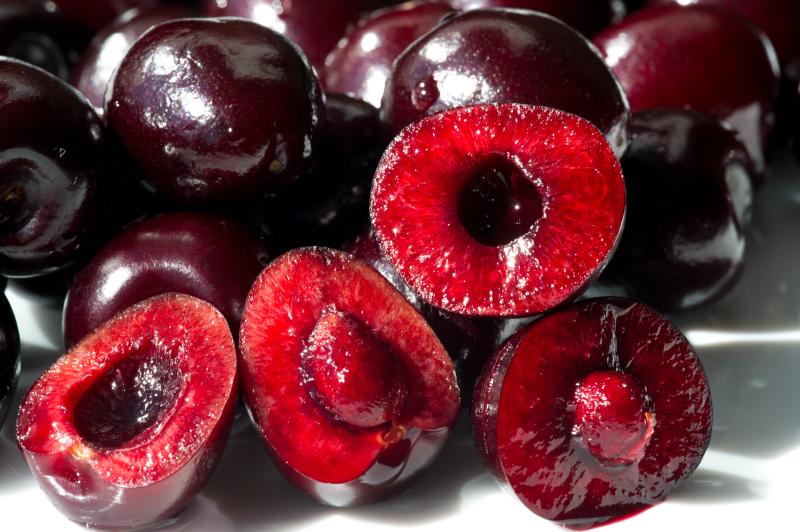
Cherries come in various flavors, ranging from sour to sweet, each with a distinct level of acidity.
The acidity of cherries is quantified by their pH value, with a lower pH indicating higher acidity. Sour cherry varieties, such as the Montmorency cherry, are known for their pronounced acidity, typically featuring a pH range of approximately 3.2 to 3.5.
This elevated level of acidity imparts the cherries with their characteristic tart flavor, making them particularly suitable for culinary applications where their vibrant sourness can be complemented by sweetness.
Sweet cherries, like the Rainier variety, tend to have lower acidity, with a pH value around 4.5, which is reflected in their sweeter taste.
But, similar to sour varieties, their acidity can also fluctuate due to environmental factors and ripeness.
Do Cherries Become Sweeter?
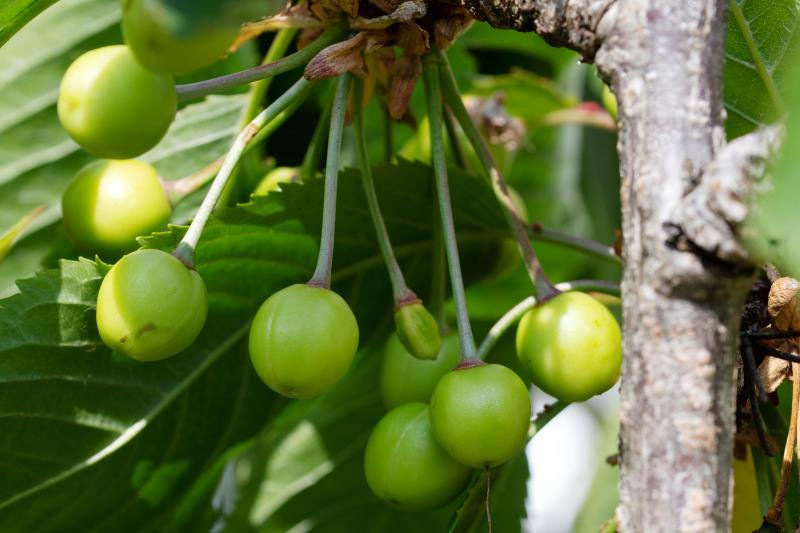
I once brought home a batch of cherries, expecting them to sweeten up after a few days on the counter, much like bananas or avocados do.
However, I quickly learned that cherries don’t play by those rules. Unlike some fruits that continue to ripen and sweeten after being picked, cherries halt their ripening process the moment they’re harvested.
This realization came after waiting in vain for my cherries to become sweeter, only to discover they remained just as they were when I bought them.
It was a clear lesson in the nature of cherries and the importance of choosing them ripe and ready from the market.
How to Choose Ripe Cherries?
- Choose plump and firm cherries with a shiny appearance.
- Give the stem a gentle tug; if it comes off easily, the cherry is ripe.
- Avoid cherries that are soft, shriveled, or have blemishes.
- Look for vibrant, uniform coloration indicating ripeness.
Ripeness at Harvest
The ripeness of cherries at the time of harvest can also affect their acidity.
Generally, as cherries ripen, their sugar content increases while acidity decreases. Therefore, cherries picked at peak ripeness tend to be sweeter with lower acidity levels, whereas those harvested a bit earlier may retain higher acidity.
Producers aim to deliver cherries in optimal condition, focusing on appearance and shelf stability, which doesn’t always coincide with harvesting the fruit at peak ripeness, as their primary concern is ensuring the cherries look appealing to consumers.
5 Well-known and Widely Available Sweet Cherry Varieties with Lower Acidity
1. Bing

Known for their large size and deep, dark red color, Bings are juicy and sweet, making them a popular choice for fresh eating.
2. Rainier

Distinguished by their yellow to golden skin with a red blush, Rainier cherries have a sweet, delicate flavor with a hint of tartness.
3. Lapins
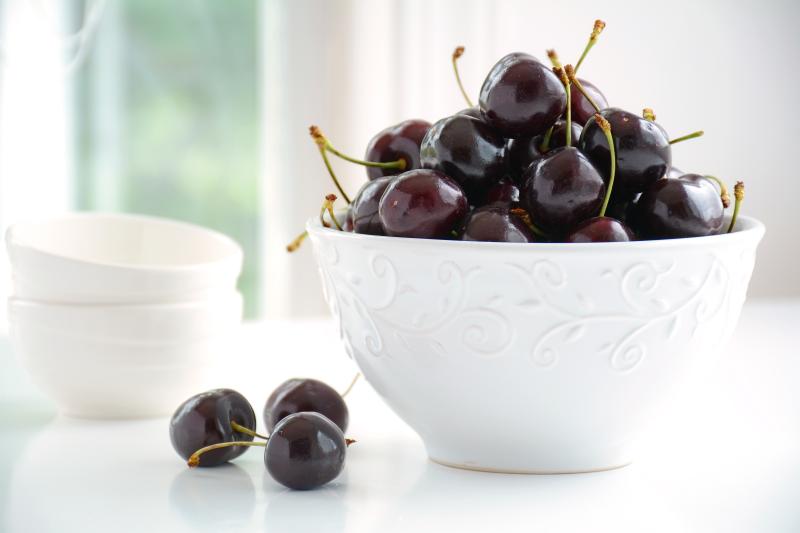
Often referred to as the self-fertile Bing, Lapins are large, dark red, and offer a sweet and rich flavor, with a firm texture.
4. Sweetheart
A later-season variety, Sweethearts are large, bright red, and have a unique sweet-tart flavor that makes them versatile for both fresh eating and cooking.
5. Stella

Known for being one of the first self-fertile sweet cherry varieties, Stella cherries produce large, heart-shaped, dark red fruit with a sweet and slightly tart flavor.
5 Sour Cherry Varieties with Higher Acidity
1. Montmorency
The most widely cultivated sour cherry in the United States, Montmorency cherries are prized for their bright red color and tart flavor, making them a favorite for pies and preserves.
2. Morello
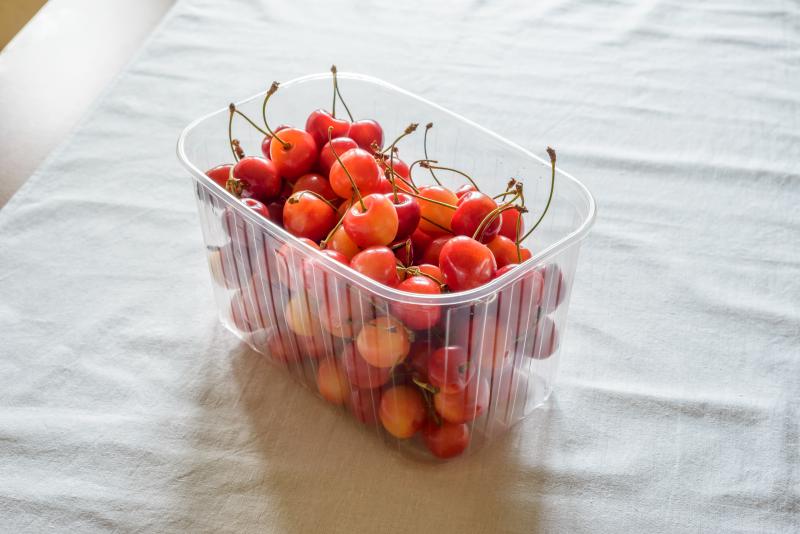
Known for their dark red, almost purple skin and juice, Morellos have a deep, sour flavor that is highly valued in baking and cooking.
3. Balaton
Originating from Hungary, Balaton is a newer variety in the U.S. that offer a unique, tart flavor with a hint of sweetness, and a darker, richer color than Montmorency.
4. Early Richmond
An early-ripening variety, Early Richmond cherries are medium-sized, bright red, and have a classic sharp tartness, making them excellent for culinary uses.
5. North Star
A dwarf variety known for its cold hardiness, North Star produces small to medium, dark red fruit with a tart flavor, suitable for both fresh eating and processing.
Health Benefits of Eating Cherries
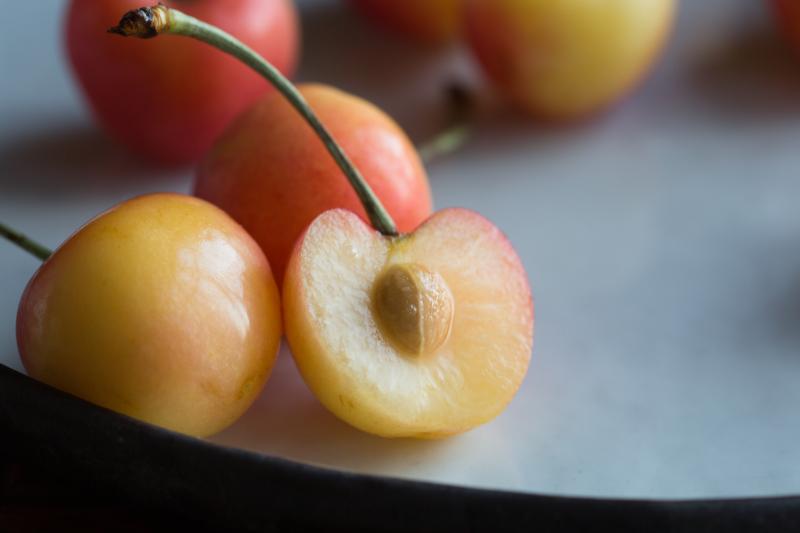
Ever wondered why indulging in cherries might lead you to dreamland a bit easier? These little powerhouses are brimming with melatonin, the very hormone that whispers to your body it’s time to hit the hay.
But the magic of cherries doesn’t stop at just nudging you into slumberland. Imagine a fruit so versatile it dances through your body, wielding antioxidants like anthocyanins and cyanidin to fend off inflammation and oxidative stress.
Think of it as nature’s way of giving your heart an extra layer of protection, with potassium and polyphenols teaming up to lower blood pressure and cholesterol.
And for those moments when you’ve pushed yourself a bit too hard, cherries come to the rescue, easing muscle soreness and speeding up your recovery. Plus, with their anti-inflammatory prowess, they’re like a soothing balm for anyone wrestling with arthritis or similar conditions.
Oh, and did we mention they’re a fiber-rich snack? That means they not only keep your digestive system on track but also help you stay full, making weight management just a tad easier. So, isn’t it remarkable how much goodness is packed into each cherry?
Potential Adverse Effects for Acid Reflux and GERD Patients

Are you navigating the tricky waters of acid reflux or GERD (Gastroesophageal Reflux Disease), and wondering if cherries are friends or foes on your journey?
Here’s a little food for thought: while cherries, with their tempting hues and juicy burst, beckon with health benefits, they also carry a secret that might not sit well with everyone.
Sour cherry varieties, or those not quite ripe, pack a punch of natural acidity that could stir up trouble for those with sensitive systems.
Think of cherries as a double-edged sword for the acid reflux or GERD warrior: on one side, they’re bursting with goodness, but on the flip side, they might just be the sneaky trigger that sparks discomfort.
For those who find cherries don’t upset their stomach, enjoying these fruits in moderation, fully ripe and sweet varieties might be the way to go.
And here’s a piece of advice that’s always ripe for picking: consulting with a healthcare provider or a dietitian is a smart move.
They can help tailor your diet to fit your specific health needs, ensuring cherries—and everything else on your plate — serve your well-being, especially when managing conditions like acid reflux or GERD.
Safe Cherry Consumption for Individuals with GERD and Acid Reflux
For individuals with GERD or acid reflux looking to safely include cherries in their diet, here are a few tips to minimize potential discomfort:
1. Choose ripe, sweet varieties over sour ones, as they tend to have a lower acid content and may be less likely to trigger symptoms.
2. Introduce cherries into your diet in small amounts to assess your tolerance and avoid potential triggers.
3. Pay close attention to how your body reacts after consuming cherries and adjust your intake accordingly.
4. Eating cherries as part of a meal or with other foods can help buffer the acid and reduce the impact on your stomach.
5. To prevent nighttime reflux symptoms, avoid consuming cherries close to bedtime or lying down after eating.
6. Drinking water after eating cherries can help dilute stomach acid and reduce reflux symptoms.
Remember, individual responses to cherries can vary, so it’s important to listen to your body and consult with a healthcare provider for personalized advice.
Final Words
The acidity of cherries varies significantly between sweet and sour varieties, with each type offering distinct culinary uses and flavors.
Sour cherries, with their higher acidity, are a favorite for cooking and baking, providing a tart contrast that enhances sweet dishes.
Sweet cherries, being less acidic, are often preferred for fresh eating.
However, individuals with GERD may need to be cautious, as the acidity in cherries, especially sour ones, can exacerbate their symptoms.
Understanding these nuances allows us to enjoy cherries in a way that best suits our tastes and health needs, celebrating the diversity and richness of this beloved fruit.